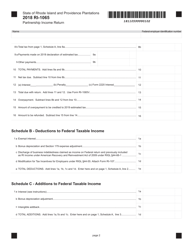

This tax amount is referred to as the "imputed underpayment" and, very generally, is determined by multiplying the total amount of netted partnership adjustments by the highest rate of tax in effect for the reviewed year (i.e., the year to which the adjustments relate).

6227.) As a default rule, the BBA procedures provide that the partnership, and not its partners, must pay any tax attributable to adjustments reflected on an AAR. (This election may be made in conjunction with filing an AAR under Sec. Certain partnerships may elect into the BBA procedures for tax years beginning after Nov. The BBA procedures generally apply to partnership tax years beginning on or after Jan. 2020- 23 for more information.) BBA overview 30, 2020 to take advantage of this relief. Eligible partnerships must file the amended return by Sept.

2020- 23, which allows eligible partnerships to file an amended return and issue amended Schedules K- 1, in lieu of filing an AAR, for certain 20 tax years. (Note that on April 8, 2020, the IRS released Rev. 6227, and addresses the effects of filing an AAR on certain types of partners. This item briefly summarizes the BBA rules, discusses the requirements for filing an AAR under Sec. For tax years beginning in 2018, partnerships that are subject to the BBA regime and that seek to adjust an item or amount reflected on an original Form 1065 or Schedule K- 1 must file an administrative adjustment request (AAR) under Sec. The BBA procedures also fundamentally changed the process for amending Form 1065 and its Schedule K- 1, Partner's Share of Income, Deductions, Credits, etc. 114- 74, repealed the partnership audit provisions under the Tax Equity and Fiscal Responsibility Act of 1982 (TEFRA) and introduced a new centralized audit regime for IRS audits of entities required to file Form 1065, U.S. The Bipartisan Budget Act of 2015 (BBA), P.L.


 0 kommentar(er)
0 kommentar(er)
